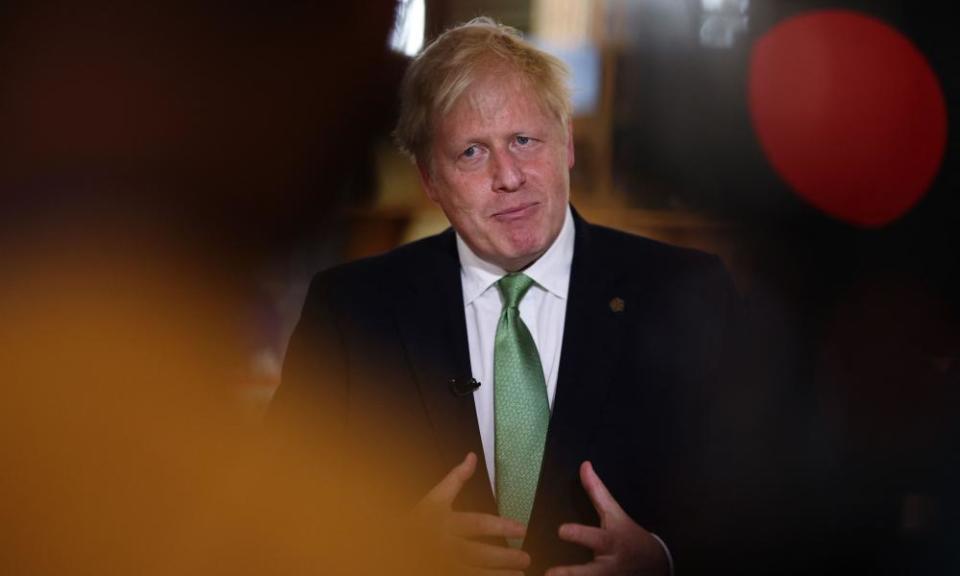Boris Johnson’s future in the frame as polls close in byelections

Voting has closed for two crucial byelections, in Wakefield and in Tiverton and Honiton, the results of which could play a pivotal role in Boris Johnson’s political future.
Defeat in both of what were previously Tory-held seats could reignite a challenge to the prime minister from disgruntled Conservative MPs, particularly if the Liberal Democrats overturn a 24,000-plus majority in Tiverton and Honiton.
The Devon seat, which has been Tory-held in its various incarnations for more than a century, was represented by Neil Parish from 2010. Parish resigned after admitting he had watched pornography in the Commons.
Turnout for the byelection in Tiverton & Honiton was 52%, the local authority said. The turnout in the 2019 general election was just under 72%.
Results are expected from about 4am on Friday, with Wakefield likely to declare first, given the West Yorkshire constituency is more geographically concentrated.
That vote also happened after the sitting Tory MP resigned in disgrace. Imran Ahmad Khan stepped down after being convicted of sexually assaulting a teenage boy.
While Labour is widely predicted to triumph in Wakefield, a constituency it consistently held up to the 2019 election, a Tory defeat in Tiverton and Honiton would send significant jitters through the parliamentary Conservative party.
If the Lib Dems win, it is believed this would be the largest numerical majority overturned in a byelection, although there have been bigger percentage swings in other seats.
Turnout in the Wakefield byelection was 39.09%, Wakefield council said. There were 27,205 verified ballots cast out of a total electorate of 69,601. The turnout in the 2019 general election was 64.15%.
Both the Lib Dems and Tories have described the Devon race as too close to call. However, the sheer scale of the Lib Dems’ efforts on the ground – on Wednesday, party activists hand-delivered more than 40,000 leaflets – could tip the result in their favour.
Johnson is in Rwanda for the Commonwealth heads of government summit, before travelling to the G7 and Nato summits in Germany and Spain, keeping him out of the country for the next week. Speaking to broadcasters in Kigali, Johnsons said: “I’m going to be watching the results with interest but always full of optimism and buoyancy but most seasoned political observers know that byelections in mid-term are never necessarily easy for any government.”
A double loss, particularly if there is a notably significant swing back to Labour in Wakefield, could push Tory backbenchers towards restarting efforts to oust Johnson in his absence.
After this month’s no-confidence vote, in which 41% of Tory MPs voted against him, under party rules he is safe from similar challenge for a year. However, these rules can be changed.
The pressure on Johnson will be particularly intense if the Wakefield result indicates Labour under Keir Starmer is making significant inroads into such “red wall” seats, adding to the pressure from the resurgent Liberal Democrats.
In December, the Lib Dems took another rural, Brexit-minded Tory stronghold, overturning a majority of nearly 23,000 to win the North Shropshire byelection, after the former incumbent Owen Paterson quit over a lobbying scandal.
This followed a win for the Lib Dems last June in Chesham and Amersham, a commuter-belt constituency north-west of London, prompting worries among Tory MPs that dozens of similar “blue wall” seats could fall amid widespread dislike of Johnson among more liberal-minded Conservative voters.
A sense that Johnson is no longer an electoral asset, coupled with the controversies over lockdown-breaking Downing Street parties, which prompted the initial confidence vote, could see Tory MPs turn decisively against the prime minister, although a new challenge is viewed as unlikely before autumn.

 Yahoo News
Yahoo News 